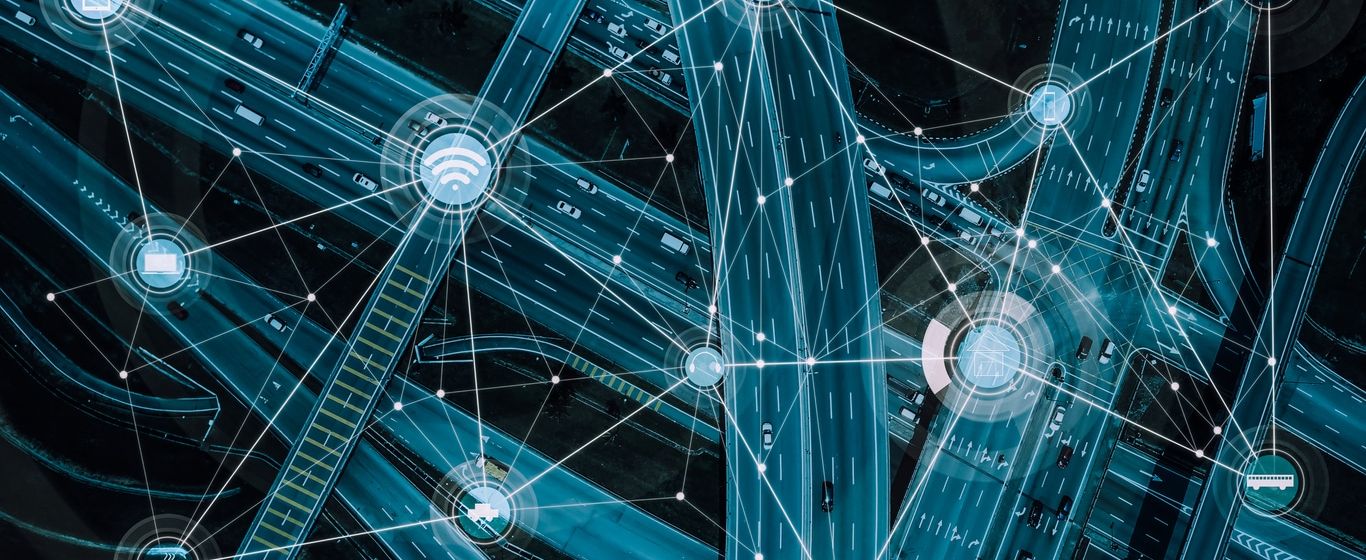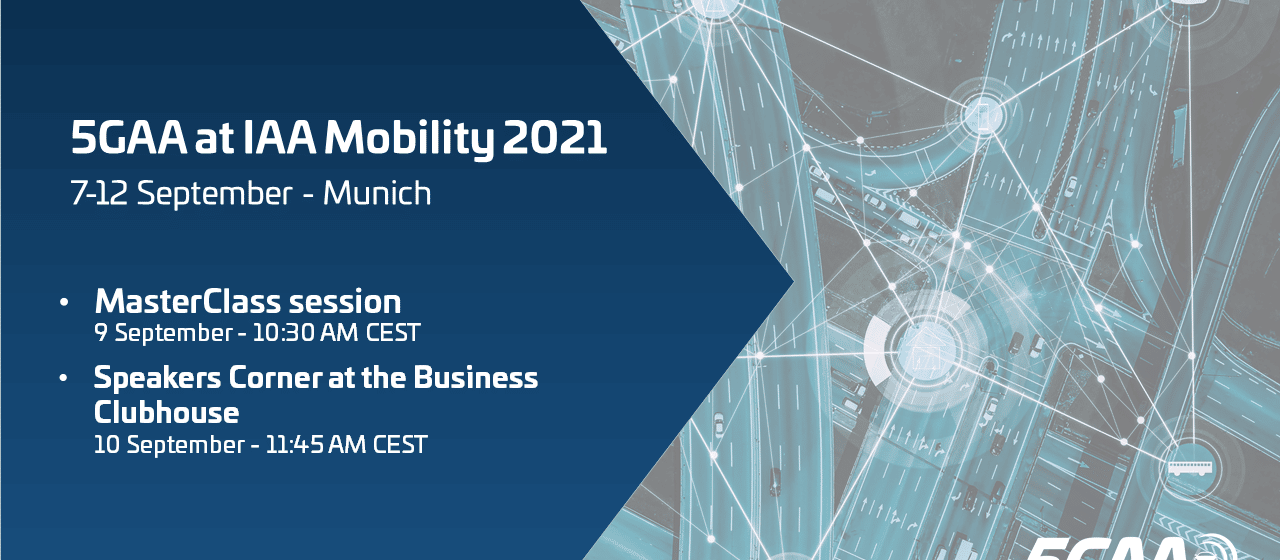
Tele-Operated Driving (ToD): System Requirements Analysis and Architecture
Tele-Operated Driving (ToD) technology assists, complements and accelerates semi- and fully automated driving in various scenarios. This 5GAA technical report studies system requirements and corresponding enabler technologies for ToD services using Cellular-V2X (C-V2X) networks. The study covers the vehicle sub-system, ToD operator sub-system, infrastructure sub-system, and C-V2X networks for end-to-end deployment of ToD services. System application layer architectures and the underlying communication network architectures for different ToD use cases and scenarios are presented in this study with the focus on interfaces among different stakeholders and with considerations on service interoperability in multi-OEM, multi-Service Provider, multi-RTA and multi-MNO environments. This study also envisages that market deployment of ToD services will follow a multi-stage roadmap, starting from confined areas, then evolving into dedicated public roads and areas, and finally covering cross-region (long-haul) mobility of automated vehicles.

5G Automotive Association Organises Conference on 5G: Connected Mobility in the Digital Age
To advance the dialogue between high-level institutional and industry stakeholders on current challenges in the field of connected and automated mobility, the 5G Automotive Association (5GAA) is organising an online conference on 28 September 2021, from 9:15 am to 3:00 am CEST.
Representatives from the European institutions, local and national authorities as well as 5GAA members will discuss ongoing challenges for connected and automated mobility and provide solutions by presenting the capabilities and deployment models of the Cellular-Vehicle-to-Everything (“C-V2X”) technology.
AGENDA
Please see the full agenda here.
09:15 – 09:30: Connected Mobility in the Digital Decade
09:30 – 10:15: 5GAA C-V2X visionary roadmap 2030
10:15 – 11:00: The global progress of C-V2X
11:00 – 11:15: Coffee Break
11:15 – 12:15: Panel discussion: Digitalisation of road transport – Quo Vadis, Europe?
12:15 – 13:00: Lunch Break – Exhibition booths
13:00 – 14:00: The path towards road digitalisation
14:00 – 14:45: Panel discussion: Connected Mobility for climate neutrality
14:45 – 15:00: Closing keynote speech
SPEAKERS INCLUDE
- Francesco Lilli, Automotive Research and Advanced Engineering, Global Head of Advanced Connectivity, Stellantis
- Bernardo Campillo Soto, Head of Industry Analysts and Ecosystem, Telefonica
- Wang Xuemin, Vice-President for Standardization & Industry Development, Huawei
- Jovan Zagajac, Product Group Manager, Enterprise Connectivity, Ford Motor Company
- Charlotte Nørlund-Matthiessen, Cabinet of Commissioner for Transport Adina-Ioana Vălean, European Commission
- Johannes Springer, Lead of 5G automotive program, Deutsche Telekom
- Ana Isabel Blanco Bergareche, Directorate-General for Traffic, Spain
- Stephan Durach, Senior Vice President – Connected Company Development, BMW
- Bart Sweerman, Senior Vice President, Services, HERE Technologies GmbH
- Peter Stuckmann, Head of Unit – Future Connectivity Systems, DG CONNECT, European Commission
- Daniele Franceschini, Head of Technology Innovation, Standardization & Portfolio Department, TIM
- Hamid Zarghampour, Chief Strategist, connected and automated transports, Swedish Transport Administration
- Nicola Farronato, Head of Innovation, City of Turin
- Daniel Mes, Member of Frans Timmermans’ Cabinet, European Commission
- Marie Högberg, Head of Connectivity Strategy, Volvo Cars
- Jill Warren, Chief Executive Office, European Cyclists’ Federation
If you have any questions, please get in touch at marcom@5gaa.org

Vehicular Antenna Test Methodology
The rising demand for connected vehicles as well as the ongoing deployment of vehicle-to-vehicle communication has shown that a unified measurement procedure for the communication subsystem antenna can add benefits for the development of vehicular communication systems. A unified measurement procedure for vehicular antennas (antennas permanently mounted on vehicles) will also ensure conformity assessments of the various regional standards are handled transparently.
5GAA, as an alliance connecting the automotive and telecom domains, developed a methodology to test vehicular antennas for communication and associated aspects (e.g. GNSS). Such a methodology can act as a commonly agreed test procedure for antenna communication subsystems. It is also expected to improve the accuracy of conformity assurance procedures for such vehicular systems.
Read the full report, here.

MEC4AUTO: Use Cases and initial test specifications review
Mobile Edge Computing (MEC) is a key enabler of several Cellular Vehicle-to-Everything (C-V2X) applications that require ultra-low latency and high reliability.
This document analyses the C-V2X Use Cases, in particular those defined by 5GAA WG1, that require the processing of large amounts of data and could benefit from the use of MEC instead of uploading the data to the cloud, which could cause additional round trip delays. The selection of Use Cases is based on inputs from auto OEMs and their key requirements about interoperability between different Mobile Network Providers (MNPs), different vehicle OEMs and different C-V2X application providers
Read the full technical report here.

5GAA to Participate to ITS WORLD CONGRESS 2021 in Hamburg, Germany
The 5G Automotive Association (5GAA) is very pleased to participate in the European edition of the ITS World Congress and to be part, alongside its members, of the discussion with global stakeholders in the field of connected mobility. This year, the event will take place from 11 to 15 October 2021 in Hamburg and will allow to “Experience Future Mobility Now.”
ITS World Congress is the world’s largest and most prominent event focused on smart mobility and the digitalisation of transports. It aims to underline the importance of Intelligent Transport Systems (ITS) and raise awareness of smart mobility solutions among policy makers, experts, and the general public. It will be a great opportunity to present the latest developments in ITS and enjoy networking opportunities.
Smart mobility and Intelligent Transport Systems (ITS) are crucial constitutive elements of 5GAA, as the association helps shape technological advances in the field. Cooperative Intelligent Transportation Systems (C-ITS) are the technologies associated with connected vehicles. These technologies, enabled by wireless transactions (V2X), would have a crucial impact on road safety and traffic efficiency. 5GAA supports the idea that 5G will be the ultimate platform to enable C-ITS and the provision of V2X.
5GAA and its members will be involved in different activities.
- During the event, we will have a booth where both industry and media visitors can learn more about 5GAA’s action to foster connected mobility.
- On 13 October, from 2 to 3 pm CEST we will host a press tour, moderated by Roger Lanctot, which will focus on concrete examples of C-V2X solutions as shown by 5GAA member demonstrations and booths. The members featured in the tour will be Qualcomm, Bosch, Telefonica, Deutsche Telekom & Continental, Novatel/Hexagon, Fraunhofer Institute FOKUS.
- 5GAA will also organise a workshop on “Connecting to Future Mobility”, from 9 am to 12 pm CEST, in Room X10 of the Congress Centre, followed by a networking lunch. The session will be a great opportunity to discuss the acceleration of C-V2X deployment and future-proof investments in digital infrastructure, compare the specifics between road corridors and urban areas, and to exchange about digital mobility services at large.
The discussion will outline the cooperation models enabling the deployment and use of 5G infrastructures for connected and automated mobility. The workshop aims at bridging representatives of national, regional & local road authorities and operators together with industry representatives.Register here to attend the event.

5GAA to participate in IAA Munich Mobility Conference 2021
The 5G Automotive Association (5GAA) is proud to announce its participation in the IAA Mobility Conference 2021 that will take place from 7 to 12 September in Munich. IAA Mobility is the leading global platform for the mobility industry and brings together actors from the entire mobility chain.
Following the guiding theme “What will move us next” the discussion will focus on how automation, connectivity, and smart city solutions will drive our progression to a more sustainable and effective mobility.
The event will provide an excellent platform to discuss the future of mobility with relevant stakeholders of the transport ecosystem.
5GAA will be active at two occasions:
- 9 September 2021 10.30 AM CEST
5GAA will hold a Master Class session. A great opportunity to engage in cross-industry exchange, present our expertise in an educational format, and discuss last updates and automated mobility by demonstrating the capabilities and deployment models of the Cellular Vehicle to Everything (“C-V2X”) technology.
- 10 September 2021, 11.45 AM CEST
5GAA will be present with its own Speaker Corner in the Business Club House, located in the central area of the exhibition. During 90 minutes our association and its members will have the opportunity to have speakers discuss the latest topics on connected mobility, as well as enjoy networking opportunities.
More details on the content of the sessions will come in the following weeks.

Tele-Operated Driving (ToD): Business Considerations
The 5GAA cross-working group work item Tele-operated Driving (ToD) aims to describe the requirements and framework needed for remote vehicle operation. The proposed results should reliably enable remote steering and manoeuvring including a human remote driver with both Direct and Indirect Control in an OEM-agnostic, inter-MNO and cross-authority operation. The intention of this work item is to study both use case and scenario definition, technical design, and business considerations. This document focuses on business considerations and aspires to identify the different elements that should be taken into account when considering the deployment of a ToD ecosystem from a business perspective.
Read the full technical report here.

Safety Treatment in V2X Applications
This White Paper describes the new challenges in the treatment of functional safety arising from the introduction of connected and distributed functions, which are typical for cellular vehicle-to-everything (C-V2X) applications. A dedicated 5GAA technical working group performed a detailed analysis to determine, propose, and evaluate possibilities for mobile network operators, vendors, and any further identified stakeholders to provide vehicle original equipment manufacturers (OEMs) what they need to treat safety in new use cases enabled by C-V2X technologies.
Read the full White Paper here.

5GAA and GCF Announce New Agreement on C-V2X Certification Programme
The newly announced programme will provide trusted foundation for C-V2X applications globally.
The 5G Automotive Association (5GAA) and the Global Certification Forum (GCF) have agreed on a new programme that will support the drive for interoperability, reliability, and safety of emerging cellular vehicle-to-everything (C-V2X) systems.
C-V2X – which allows direct wireless communication between vehicles, and between vehicles and the infrastructures on the roadways – is an essential enabler for a safer and more efficient intelligent transportation system. It therefore requires a certification process to ensure compliance with global standards and to provide reliability to manufacturers and users alike.
The newly established programme will enable manufacturers to certify their C-V2X capable products – including onboard units (OBU) and roadside units (RSU) – for C-V2X PC5 Mode 4 functionality.
Many actors of the C-V2X ecosystem will be able to benefit from the new programme. Tier 1 manufacturers of OBUs and RSUs can ensure their products are interoperable with each other in terms of V2V functionality; vehicle manufacturers can rely on intelligent connectivity within automobiles; and insurance companies will have the opportunity to monitor for safe driving practices. Municipal traffic authorities will also be able to trust in the potential of products to operate over their infrastructure, maintaining traffic flows, and all road users – including cyclists and pedestrians, as well as drivers – can look forward to the safer roads promised by intelligent mobility.
GCF’s certification scheme has been evolving since 1999 in alignment with developments in the wireless communication industry. This result stems from the collaboration 5GAA and GFC have reinforced since 2019, to investigate the principles and framework for a certification programme – designed specifically for C-V2X technologies.
This represents the first part of a multiphase certification programme that will evolve from radio layer certification of PC5 Mode 4 (V2V and V2I) to LTE and 5G-NR based V2X-Uu (V2N) using the 4G and 5G cellular network for communications, taking advantage of the increased functionality and performance that 5G brings.
For more information and to register your interest in the new GCF C-V2X certification programme, click here.
Read the press release here.

5G Automotive Association Discusses the Acceleration of 5G Deployment on European Roads at MCW Barcelona 2021
The 5G Automotive Association (5GAA) – with the engagement of EU representatives and stakeholders of the C-2VX ecosystem – has discussed the latest developments, opportunities, and challenges presented by connected mobility and 5G-V2X technology at the Mobile World Congress Barcelona 2021.
BARCELONA, 28 June 2021 – The 5G Automotive Association (5GAA) presented the latest global deployments of ‘Cellular Vehicle to everything’ (C-2VX) and 5G technologies at GSMA’s Mobile World Congress Barcelona 2021. The conference offered an overview on the broad-scale improvements that connected mobility can bring to the global automotive system, highlighting the benefits the technology brings in Europe and beyond.
The association disclosed the last global updates of 5G-V2X technology which will enable real-time connection between vehicles and their surroundings – starting today with LTE-V2X technology. 5G-powered vehicles are expected to hit the European market this year, as 5GAA members are leading C-V2X deployment through network based, direct communications on the continent. Technological progress supports more advanced use cases and the combination of long-range and short-range connectivity will grant the optimal setup for safety and efficiency of traffic.
“In the next two to three years, our association expects to see mass deployment of vehicle-to everything (V2X) use cases geared towards improving traffic efficiency and road safety around the world”, said 5GAA Director-General Johannes Springer. From 2024 onwards, 5GAA further anticipates the large-scale introduction of advanced safety and automated driving use cases supported by C-V2X. 5GAA supports the ecosystem by identifying these required use cases and services which are expected to be enabled by 5G-V2X in the coming decade. This enables European stakeholders to engage and collaborate in order to scale up V2X services and deliver societal benefits.
5GAA also underlined the strong need for a harmonised regulatory approach that will stimulate innovative business models and grant European competitiveness. The association favours a technology-neutral regulatory framework that will be focused on service delivery and will foster market-led innovation. Only an enabling and future-proof regulatory environment, conducive to C-V2X rapid deployment by OEMs and road authorities, will improve road safety and reach climate-neutrality.
The association highlighted 5G-powered vehicles are already commercialized in China. However, there are some relevant improvements in C-V2X implementation and 5G accessibility on roads in Europe. Many cities and road operators are starting to offer internet interfaces with real-time traffic information such as red light space, slippery roads and even wrong-way-drivers warning.
For one, Dieter Hötzer – Vice President Automated Driving Systems at Bosch – illustrated the Wrong Way Driver Solution developed by the 5GAA member company, as a clear example of technology that greatly impacts road safety. The software needs a GPS signal transferred to a cloud system that alerts drivers going the wrong way and warns other vehicles in the danger zone, sending out almost instant push notifications.
5G provides a revolutionary impact on the automotive system bringing several benefits and it is the result of a steady technology evolution. While it improves traffic efficiency minimising travel times and traffic jams, it also increases road safety by reducing road fatalities.
“Ensuring rapid and efficient deployment of 5G along broad networks is critically important to the future of mobility and will result in numerous safety benefits” concluded Springer.


